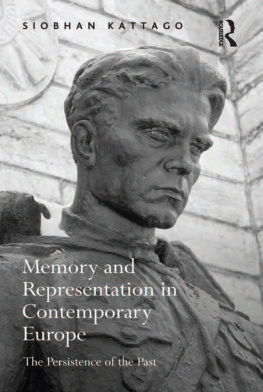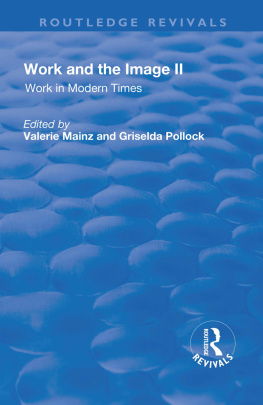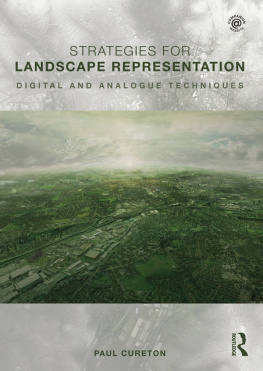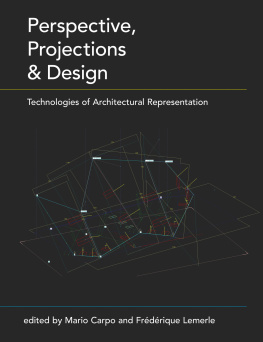DIFFRACTIVE TECHNOSPACES
To all of my significant others
Diffractive Technospaces
A Feminist Approach to the Mediations of Space and Representation
FEDERICA TIMETO
Academy of Fine Arts, Palermo, Italy
First published 2015 by Ashgate Publishing
Published 2016 by Routledge
2 Park Square, Milton Park, Abingdon, Oxon OX14 4RN
711 Third Avenue, New York, NY 10017, USA
Routledge is an imprint of the Taylor & Francis Group, an informa business
Copyright Federica Timeto 2015
Federica Timeto has asserted her under the Copyright, Designs and Patents Act, 1988, to be identified as the author of this work.
All rights reserved. No part of this book may be reprinted or reproduced or utilised in any form or by any electronic, mechanical, or other means, now known or hereafter invented, including photocopying and recording, or in any information storage or retrieval system, without permission in writing from the publishers.
Notice:
Product or corporate names may be trademarks or registered trademarks, and are used only for identification and explanation without intent to infringe.
British Library Cataloguing in Publication Data
A catalogue record for this book is available from the British Library
The Library of Congress Cataloging-in-Publication Data has been applied for
ISBN 9781472445452 (hbk)
ISBN 9781315577111 (ebk-PDF)
ISBN 9781317150992 (ebk-ePUB)
Contents
List of Figures
Acknowledgements
I thank Yodit, for being aware and respectful of my work, for all the times that she didnt interrupt me while writing, as well as for those in which she did beneficially burst into the room of my own. I thank Giovanni, for having accepted my confusion and fragility, containing them in his words and eyes. And my friends Massimiliano, for being the only person I always get along with, regardless of my mood, and Caren, for having encouraged me to go on, and for being present, although too far away.
I also thank Pilar, for resting on my lap almost until the end, of her life and of my writing. Malcolm, for his positive tension. Rossellina, for her unending lickings. Cerotto, for his fluffy stickiness.
And I thank Richard, for being the most accurate, reliable and punctual person with which I have ever worked.
Introduction
This book undertakes a redefinition of the relationship between space and representation, beginning with a revised understanding of both concepts according to a performative, non-representational perspective. Here, representation is not refused, but performed differently and in reciprocity with an articulation of technospaces. I argue the latter (defined here as the sociotechnical environments in which humans and machines relate and intersect) are dynamic and contingent formations whose emergence cannot be disjoined from the generativity of the mediations that traverse them, making recourse to external, preformed representations impossible since technospaces develop together with representations thanks to the creative capacity at their core.
Whereas the conflation of representation and spatialisation has usually been employed to suppress the dynamism of both, acknowledging the conjoined performativity of space and representation gives dynamism back to both of them. This acknowledgement also allows a politics of spatial engagement which, as I argue through several examples in the course of the book, is precluded when space is, on the contrary, considered as an already-there quantifiable dimension, devoid of any movement. Representations of technospaces cannot be made to correspond, resist or transcend the spaces they represent because they actually do not have space outside space: in fact, they do not exist in a separate domain waiting to be picked up when needed, but only together with the spatial performances that they enact and within which they conversely take place.
For articulating both representation and space as well as their relationship, I primarily draw on the thought of Donna Haraway, whose politics of location (1991) and methodology of diffraction (1992; 1997), taken together in their cross-references, I consider among the most fruitful concepts to re-turn to, particularly when space and representation are considered in combination rather than in the singular. Both location and diffraction, while being specifically analysed in , are key concepts and methodological tools that traverse the whole book, both in its more theoretical parts and in the case studies which take into consideration a wide range of digital media, from film and video to locative media applications and projects for the Web.
In , where I consider the navigational possibilities of contemporary geomedia, starting from the opposition between location and mobility that has animated the imagination of digital space, another dualism deriving from the conceptual opposition between space and place that I instead reconcile in order to outline a different genealogy and a politics of location for locative media.
in which, after discussing the passage from a closed to an open consideration of bodies in relation to information flows, I put Haraways aesth-ethics of diffraction and Flix Guattaris (1995) proto-aesthetic paradigm (p. 101) in dialogue.
The main section of develops an investigation of the meanings of diffraction (Haraway, 1992; 1997), the fundamental concept around which Diffractive Technospaces revolves, that not only shows how representations can and must be articulated differently, but also the mutual relation between observing practices and observed phenomena, which only permits a performative, situated reconceptualisation of both space and representation. Literally, diffraction describes the interference of waves when they encounter an obstacle, such as when light passes through a slit.
According to the laws of classical mechanics (see Barad, 2007, p. 97 ff.), when a number of particles imagined as little balls are emitted by a ball machine and sent through a two-slit screen, they hit the detection screen opposite the source machine according to the path that they take, that is, maintaining the separate trajectories of the two slits through which they have passed, whereas waves that pass through the two openings overlap on the detection screen, creating interference among themselves. However, quantum physics has shown that when the experiment is performed using tiny particles of matter, like electrons, they behave like waves once they arrive on the detection screen; they interfere and overlap, a phenomenon which contrasts with the wave-particle duality of classical physics.
Additionally, the experiment conceived by Niels Bohr in the late 1950s (see Barad, 2007) and effectively realised only in the mid-1990s shows that when a which-path device is used in the two-slit experiment in order to understand which path an electron imagined as a particle takes each time it passes through the two openings, whether through the upper or the lower slit, then the electrons behave as particles once they hit the detection screen, without creating interference. This demonstrates that a given apparatus interferes in the process observed; thus, given spatio-temporal boundaries cannot be assigned to objects prior to observation, and measuring apparatuses







